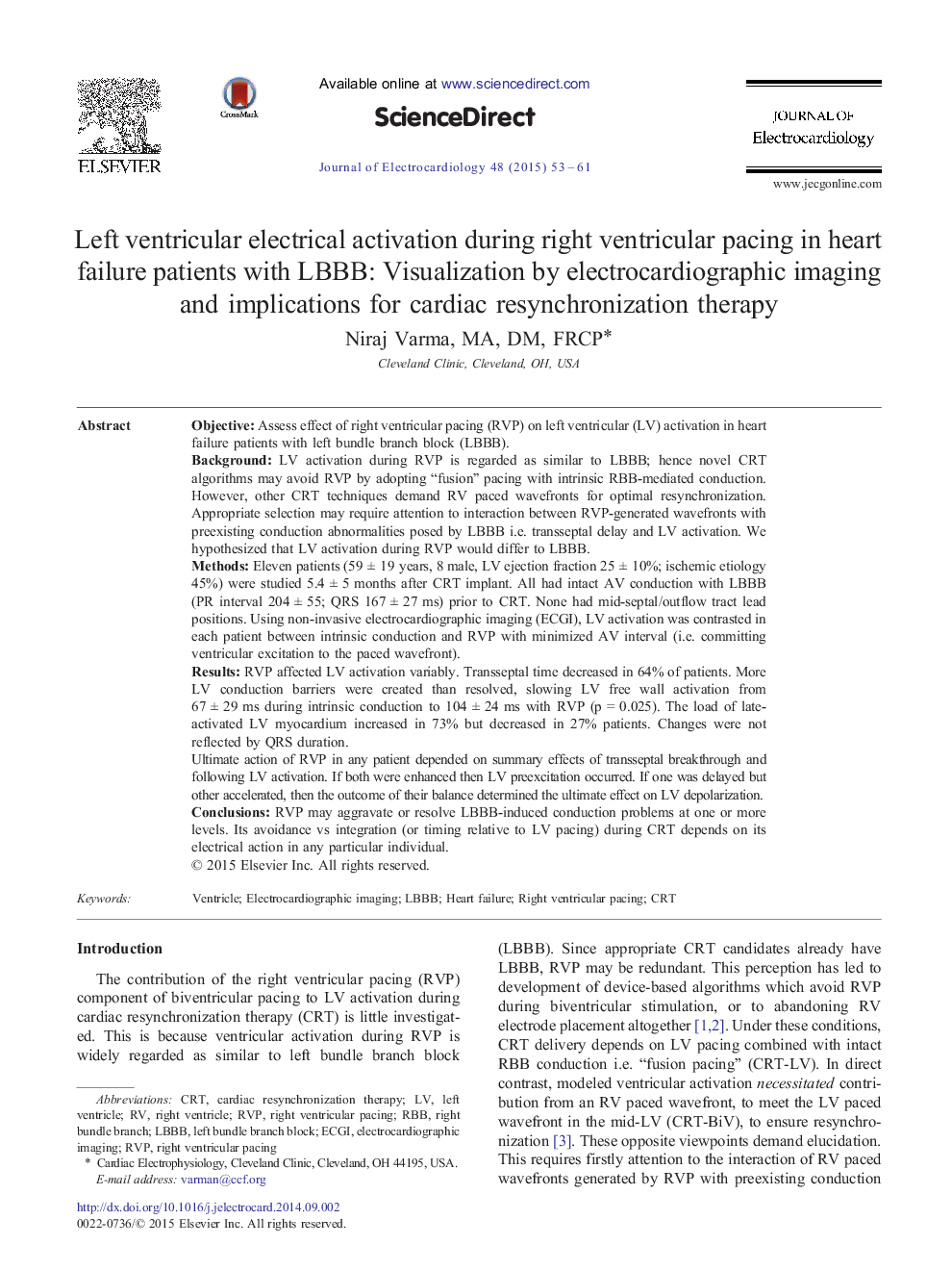| کد مقاله | کد نشریه | سال انتشار | مقاله انگلیسی | نسخه تمام متن |
|---|---|---|---|---|
| 5986435 | 1178845 | 2015 | 9 صفحه PDF | دانلود رایگان |

- The role of the right ventricular apical pacing (RVP) component of CRT in patients with LBBB has been questioned since ECG morphologies in LBBB and RVP are similar. Thus, recent pacing techniques permit withdrawal of RVP.
- Here, testing with non-invasive ECGI imaging showed that RV pacing changed intrinsic conduction compared to LBBB. Pacing could aggravate or resolve baseline conduction problems at levels of transseptal activation, patterns of wavefront propagation and conduction barriers, extent of absolute LV delay, and burden of late-activated myocardium.
- Use or avoidance of RVP during CRT should be individualized according to electrical action of RVP.
ObjectiveAssess effect of right ventricular pacing (RVP) on left ventricular (LV) activation in heart failure patients with left bundle branch block (LBBB).BackgroundLV activation during RVP is regarded as similar to LBBB; hence novel CRT algorithms may avoid RVP by adopting “fusion” pacing with intrinsic RBB-mediated conduction. However, other CRT techniques demand RV paced wavefronts for optimal resynchronization. Appropriate selection may require attention to interaction between RVP-generated wavefronts with preexisting conduction abnormalities posed by LBBB i.e. transseptal delay and LV activation. We hypothesized that LV activation during RVP would differ to LBBB.MethodsEleven patients (59 ± 19 years, 8 male, LV ejection fraction 25 ± 10%; ischemic etiology 45%) were studied 5.4 ± 5 months after CRT implant. All had intact AV conduction with LBBB (PR interval 204 ± 55; QRS 167 ± 27 ms) prior to CRT. None had mid-septal/outflow tract lead positions. Using non-invasive electrocardiographic imaging (ECGI), LV activation was contrasted in each patient between intrinsic conduction and RVP with minimized AV interval (i.e. committing ventricular excitation to the paced wavefront).ResultsRVP affected LV activation variably. Transseptal time decreased in 64% of patients. More LV conduction barriers were created than resolved, slowing LV free wall activation from 67 ± 29 ms during intrinsic conduction to 104 ± 24 ms with RVP (p = 0.025). The load of late-activated LV myocardium increased in 73% but decreased in 27% patients. Changes were not reflected by QRS duration.Ultimate action of RVP in any patient depended on summary effects of transseptal breakthrough and following LV activation. If both were enhanced then LV preexcitation occurred. If one was delayed but other accelerated, then the outcome of their balance determined the ultimate effect on LV depolarization.ConclusionsRVP may aggravate or resolve LBBB-induced conduction problems at one or more levels. Its avoidance vs integration (or timing relative to LV pacing) during CRT depends on its electrical action in any particular individual.
Journal: Journal of Electrocardiology - Volume 48, Issue 1, JanuaryâFebruary 2015, Pages 53-61